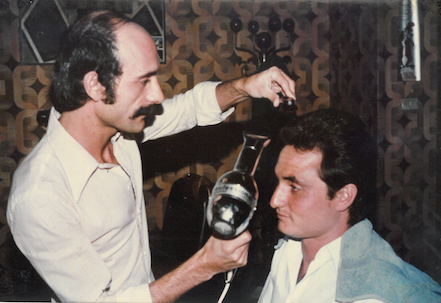Maria Bianchi was born in Milan in 1948 to Luigi Bianchi and Luisa Prada. A second-wave feminist, she dreams of working as an actress with director Giorgio Strehler. She graduated in political science from the University of Milan and enrolled in the Italian Women’s Union club; she then joined the Piccolo Teatro in Milan where she studied mime and acting.
At the age of 23, she entered the historic family business, where she designs accessories under the nickname “Miuccia”.
In the 1970s, the company of the Prada brothers, founded in 1913 in the Galleria Vittorio Emanuele II, still produced travel items, leather goods and glassware all made in Italy.
From 1978, the company passed from Luisa Prada to Miuccia and to her future husband, Patrizio Bertelli. Thanks to the couple’s instincts, the brand begins to design its first clothing line and picks the inverted triangle as the now iconic logo, inspired by the buckles of some vintage bags made for the Savoy.
It is the beginning of a revolution.
Miuccia was an eclectic and rebellious young woman who lived in an Italy made up of the social movements and hymns to freedom of the 1960s. Thanks to her nonconformity and critical spirit, the face of fashion, especially for women, was about to radically change.
“I’ve always liked the bourgeoisie. I was intrigued by the bourgeoisie. Especially because it was the culture of the sixties and seventies: Antonioni, Godard, Buñuel.”
At the first runway show in 1988, the models appeared as well educated girls, decisive and invincible, a little too bohemian for the adult and bourgeois world that loved being scandalized, with a concept of unconventional beauty that sometimes leaned toward an ugly aesthetic. “Ugly is attractive, ugly is exciting”. Girls in uniforms with bare legs, or wearing vintage-style brown coats, who spent nights with musicians and creatives, and studied too much art and not enough math. Miuccia had women in mind who knew how to have fun, who did not take themselves too seriously, and who aimed at practicality without forgetting elegance, with an eventful life, but free of burdens.
Establishing this as law is the iconic black backpack in Pocono fabric, a nylon from the war years, a high-tech material used to make parachutes and military tents. With it, the designer launched a challenge to preconceived ideas of what until then was considered “luxury”. As an accessory, the backpack, much more than the handbag, allowed women freedom of movement and ease.
Through her creations Miuccia tells about the emancipation of the woman and her role in society, she speaks of self-confidence, freedom of expression and politics. “Women – in fact – have many facets. We are much more complex. We are lovers, mothers, workers.” Perhaps, this is the only distinctive element that persists in successive collections, the reason for the complex interrelation that exists between the concept of femininity and feminism and their relationship with fashion itself. There is no single (male) model to which the woman must or must not comply. Women just have to be themselves and trust their instincts.
These are also the words of the legendary Vogue editor. “In the end, I respond to my instincts. Sometimes I am successful, and, of course, sometimes I am not. However, I think we must remain faithful to what we believe.” And if in America Anna Wintour dictates the rules, in Italy Miuccia Prada does.

The lady with the pleated knee-length skirt and blue sweater has always made journalists and stylists go crazy, following all her likes and dislikes.
In the early ‘90s Miuccia created Miu Miu, a female brand with a Parisian style; through the Women’s Tales series she promoted the cinematographic work of young talented women; and in 1993 she opened the Prada Foundation, the avant-garde nerve center of the artistic-cultural scene of Milan.
“There has always been the idea that fashion is frivolous and that in order to make fashion one has to not think … but every designer has their own vision. The language of fashion is spontaneous and all of it has to do with art: you cannot actually make fashion if you do not have the desire to go outside the lines.”
And so, from collection to collection, Miuccia Prada shapes the spirit of the women of the time by reminding them to never hide behind labels of any kind. For this, we thank you Miuccia, for your obsessions and wonderful contradictions, which are also ours!






